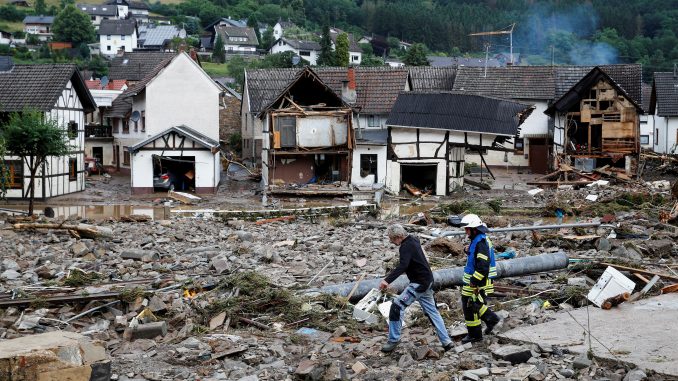
Introduction
Europe is reeling from a devastating natural disaster as massive floods have swept across several countries, causing extensive damage, loss of life, and leaving many residents missing or displaced. These unprecedented floods have not only taken a severe toll on communities but have also raised urgent questions about the growing impact of climate change on extreme weather events. In this article, we’ll examine the recent floods that have affected Europe and the broader implications they hold for the region and the world.
The Unprecedented Scale of the Flooding
Over the past few weeks, several European countries have been grappling with record-breaking rainfall and catastrophic flooding. Germany and Belgium have borne the brunt of the disaster, with flash floods tearing through towns and villages, and swollen rivers inundating urban areas. The Netherlands, Luxembourg, and Switzerland have also experienced significant flooding.
The extreme weather event was characterized by heavy rainfall that overwhelmed riverbanks and drainage systems, causing rivers to burst their banks and triggering landslides. This sudden and intense deluge resulted in widespread devastation.
Human Toll and Rescue Efforts
The human toll of these floods is staggering. Dozens of lives have been lost, and many people are still missing. Tens of thousands have been evacuated from their homes to escape the rising waters. In some areas, entire communities have been cut off from essential services and transportation routes.
Search and rescue operations are underway, with emergency services and volunteers working tirelessly to locate and assist those in need. Helicopters have been deployed to reach stranded residents, and shelters have been set up to provide refuge to those displaced by the floods.
Infrastructure and Economic Impact
The damage to infrastructure is extensive. Roads and bridges have been washed away, power lines toppled, and public transportation networks disrupted. Homes and businesses have been inundated, leading to economic losses that will likely run into billions of euros.
Agricultural regions have also been severely affected, with flooded fields and damaged crops. The long-term impact on food production and supply chains remains a concern.
Climate Change and Extreme Weather
The intensity and frequency of extreme weather events like these floods are consistent with the broader trend of climate change. A warming planet has the capacity to hold more moisture in the atmosphere, which can lead to more intense rainfall when atmospheric conditions are favorable.
Scientists have repeatedly warned that climate change increases the likelihood of extreme weather events, including floods, droughts, hurricanes, and wildfires. These events not only threaten human lives and livelihoods but also strain the capacity of governments and communities to respond effectively.
International Response and Preparedness
The floods in Europe have triggered an international outpouring of support and solidarity. Neighboring countries and organizations have offered assistance in the form of rescue teams, equipment, and financial aid. Mutual aid and cooperation are critical in responding to and recovering from such disasters.
The floods serve as a stark reminder of the importance of climate resilience and preparedness. Many European countries have robust flood control measures in place, but the unprecedented scale of these floods has highlighted the need for continuous improvement and adaptation to changing climate patterns.
Conclusion
The massive floods that have struck Europe are a somber indication of the escalating impact of climate change on extreme weather events. As communities grapple with the immediate aftermath of this disaster, there is a growing sense of urgency in addressing the root causes of climate change and taking proactive steps to mitigate its effects.
In addition to reducing greenhouse gas emissions, investing in climate adaptation measures, such as improved flood defenses and early warning systems, is crucial to protect lives and property in an increasingly unpredictable climate. The floods in Europe serve as a grim reminder that the consequences of climate change are not a distant future but a pressing reality that demands collective action.